| Decimal One Penny | |
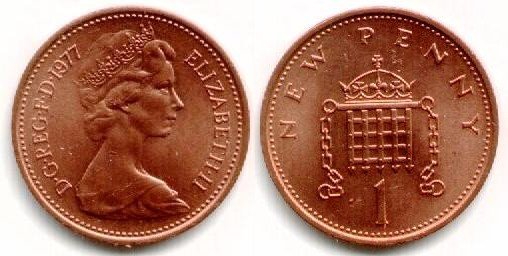
|
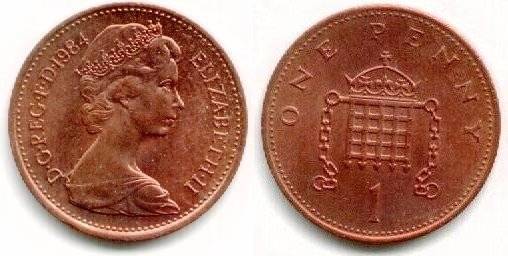
|
| Bronze, issued from 1971 to 1981 | Bronze, issued from 1982 to 1984 |
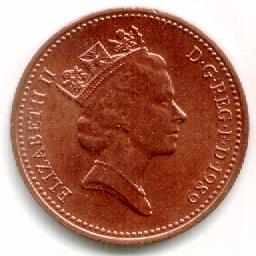
|
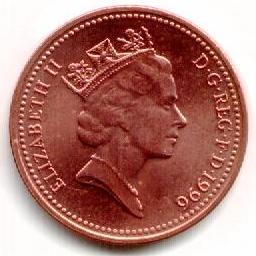
|
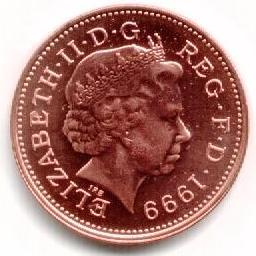
|
| Bronze, issued from 1985 to 1992 | Copper plated steel, issued from 1992 to 1997 | Copper plated steel, issued from 1998 to 2008 |
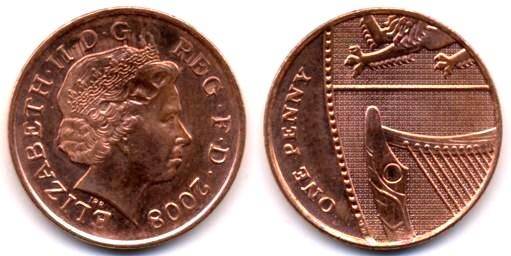
|
| Copper plated steel, issued from 2008 |
| Decimal Two Pence | |

|
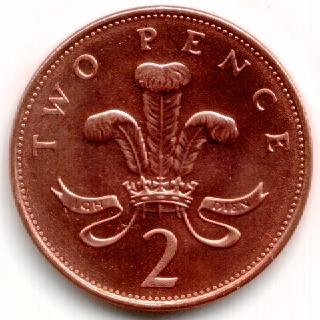
|
| Bronze, issued from 1971 to 1981 | Bronze, issued from 1982 to 1984 |
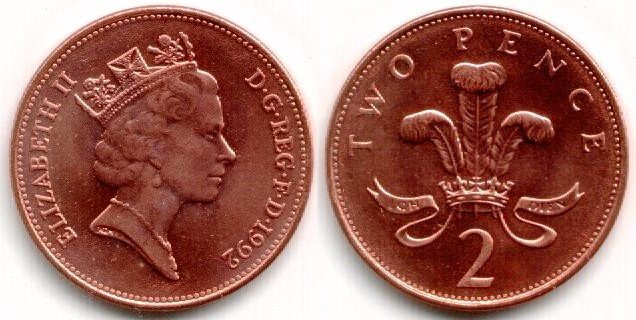
|
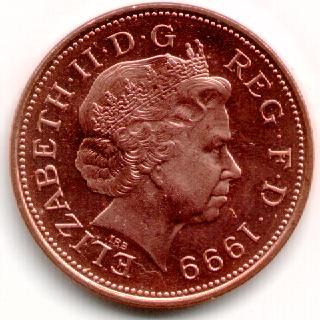
|
| Bronze, issued from 1985 to 1992 | Copper plated steel, issued from 1998 to 2008 |
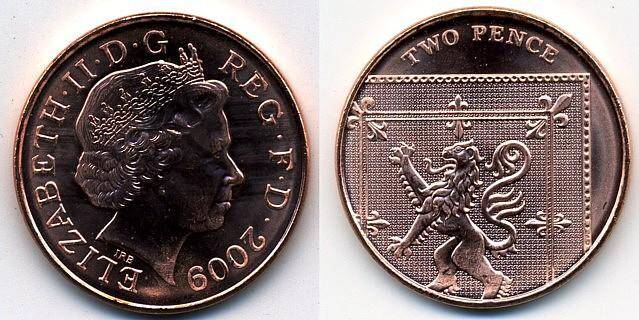
|
| Copper plated steel, first issued in 2008 |
| Decimal Five Pence | |
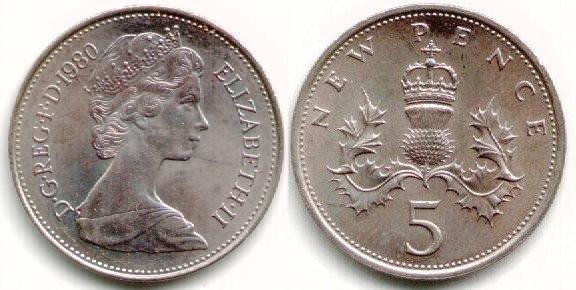
|
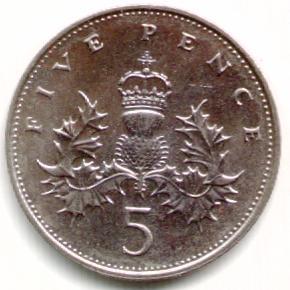
|
| Cupronickel, Large, Issued from 1968 to 1981 | Cupronickel, Large, Issued from 1982 to 1984 |
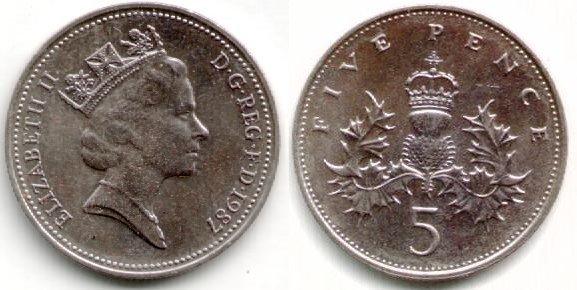
|
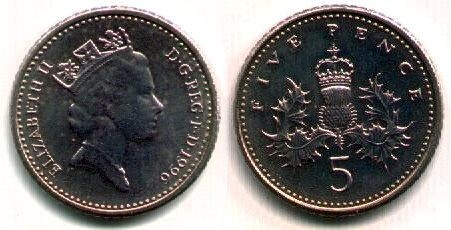
|
| Cupronickel, Large, Issued from 1985 to 1990 | Cupronickel, Small, Issued from 1990 to 1997 |

|

|
| Small, Issued Cupronickel from 2008 to 2010 - Plated steel from 2011 | |
| Decimal Ten Pence | |
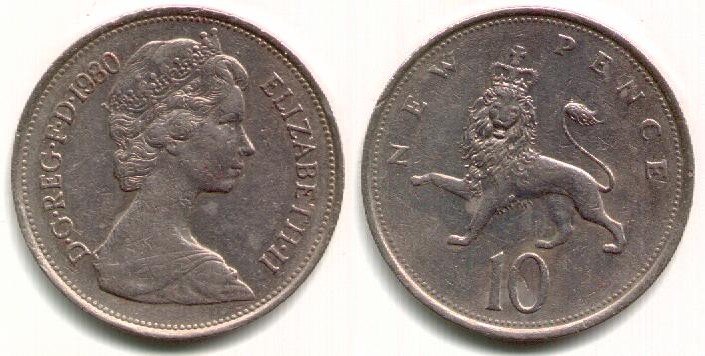
|
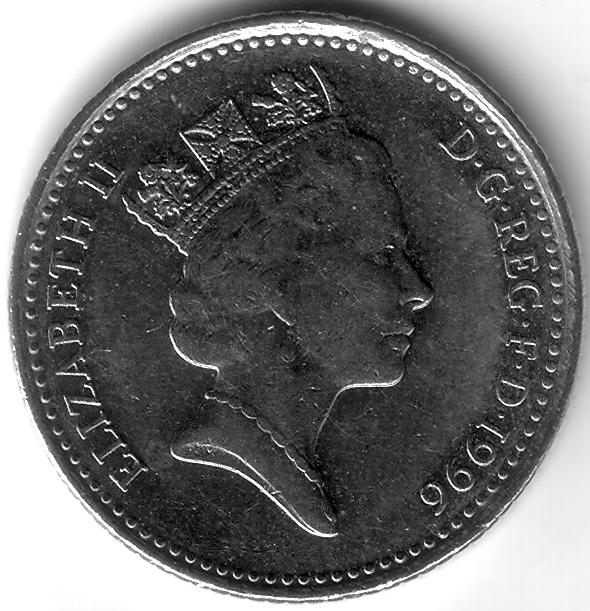
|
| Cupronickel, Large, Issued from 1968 to 1981 | Cupronickel, Small, Issued from 1992 to 1997 |
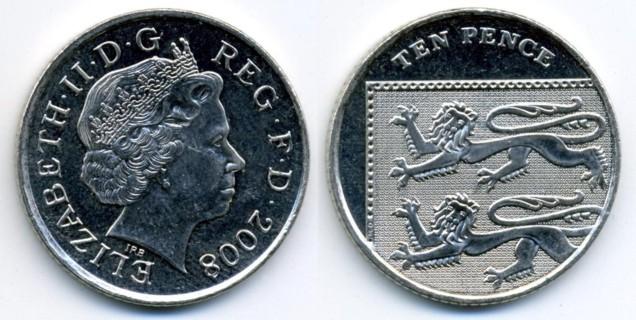
|
|
| Small, Issued Cupronickel from 2008 to 2010 - Plated steel from 2011 | |
| Decimal Twenty Pence | |
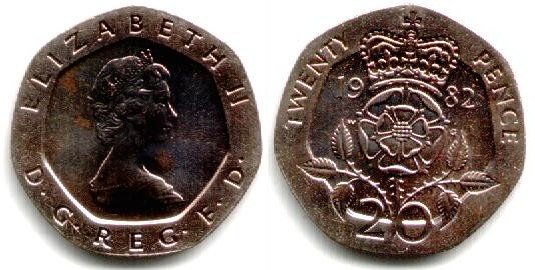
|
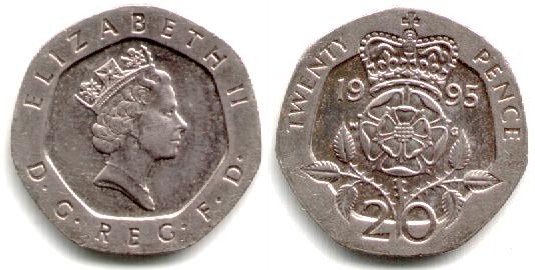
|
| Cupronickel, Issued from 1982 to 1984 | Cupronickel, Issued from 1985 to 1997 |
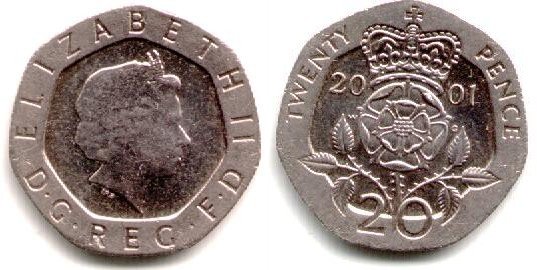
|
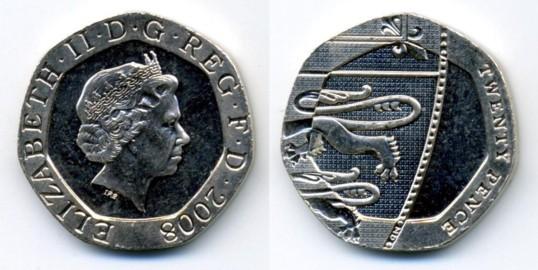
|
| Cupronickel, Issued from 1998 to 2008 | Cupronickel, Issued from 2008 |
| Decimal Fifty Pence | |
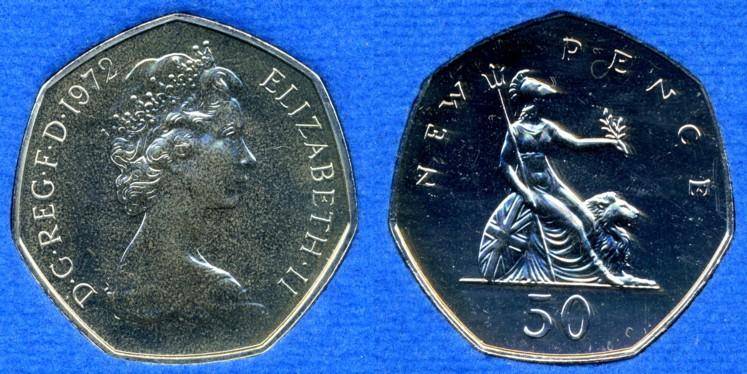
|
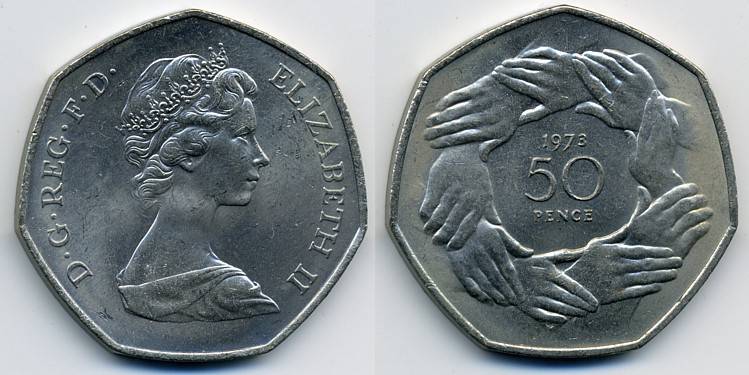
|
| Large, Issued from 1969 to 1972, and 1974 to 1981 | EEC - Large, Issued in 1973 only |
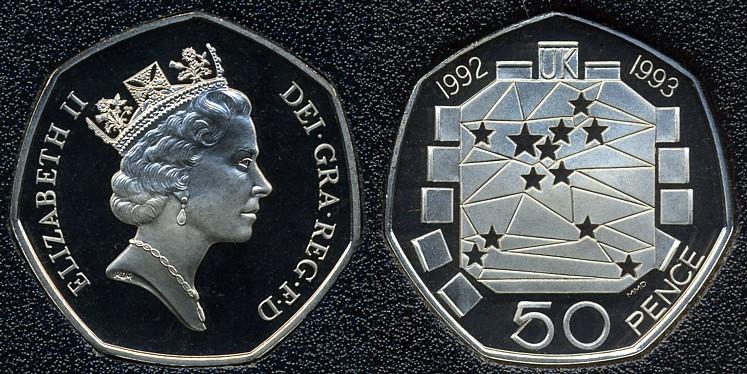
|
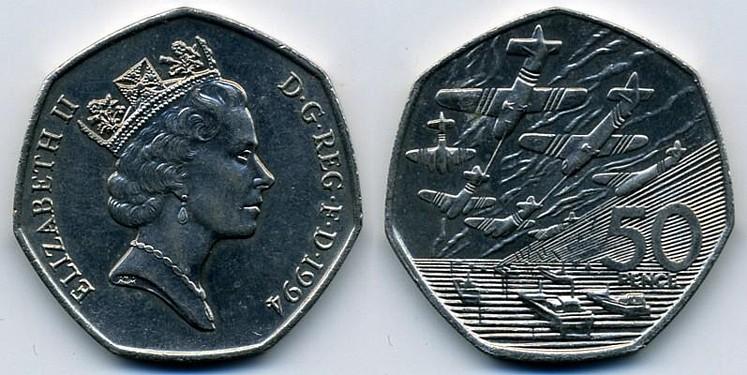
|
| EEC - Large, Issued in 1992 and 1993 | D Day - Large, Issued in 1992 |
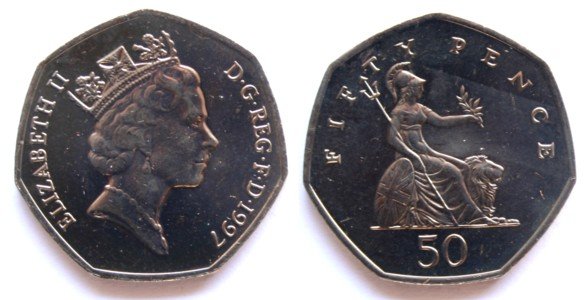
|
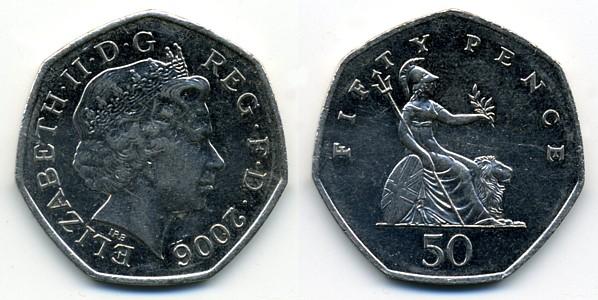
|
| Small, Issued only in 1997, | Small, Issued from 1998 to 2008 |
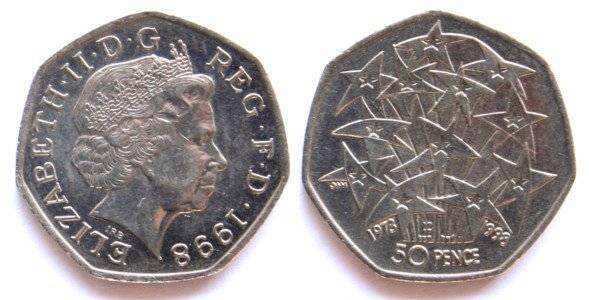
|
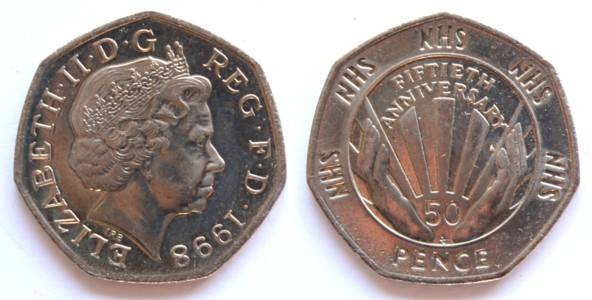
|
| EEC - Small, Issued in 1998 | NHS - Small, Issued in 1998 |
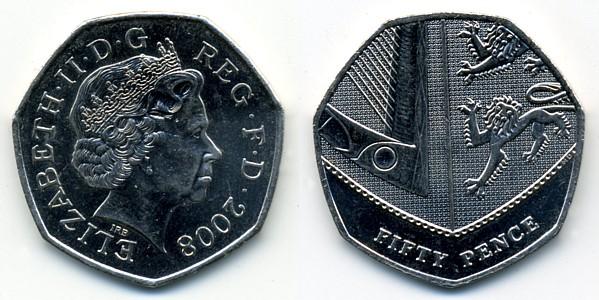
|
|
| Small, Issued from 2008 | |
| Decimal One Pound | |||
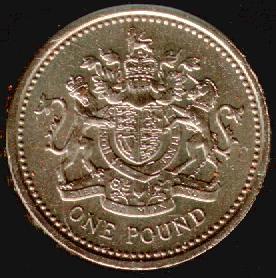
|
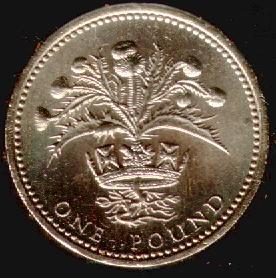
|
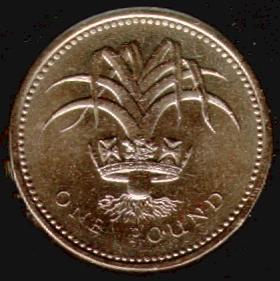
|
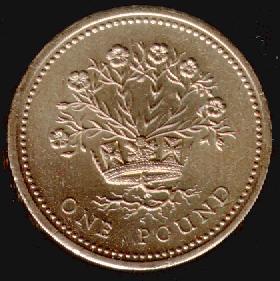
|
| Issued in 1983 (UK design) |
Issued in 1984 (Scottish design) |
Issued in 1985 and 1990 (Welsh design) |
Issued in 1986 and 1991 (Northern Ireland design) |
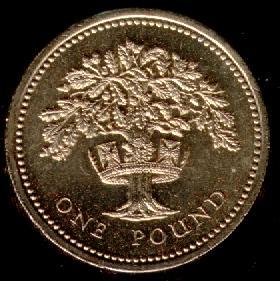
|
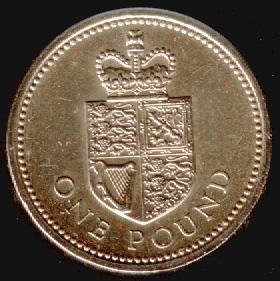
|

|

|
| Issued in 1987 and 1992 (English design) |
Issued in 1988 (UK design) |
Issued in 1989 (Scottish design) |
Issued in 1993 (UK design) |
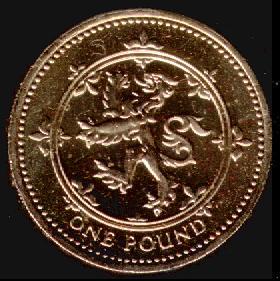
|
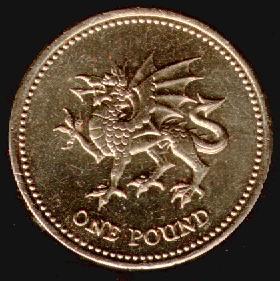
|
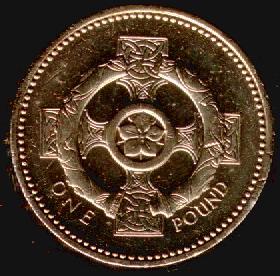
|
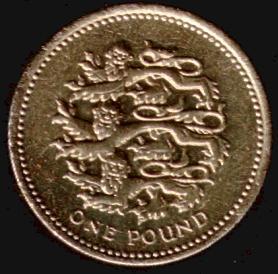
|
| Issued in 1994 (Scottish design) |
Issued in 1995 (Welsh design) |
Issued in 1996 (Northern Ireland design) |
Issued in 1997 (English design) |

|

|

|

|
| Issued in 1998, 2003 and 2008 (UK design) |
Issued in 1999 (Scottish design) |
Issued in 2000 (Welsh design) |
Issued in 2001 (Northern Ireland design) |

|
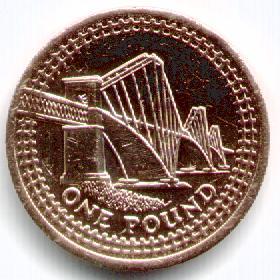
|
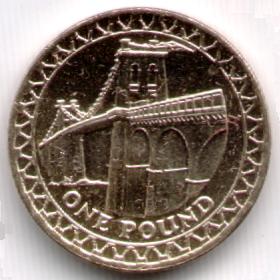
|
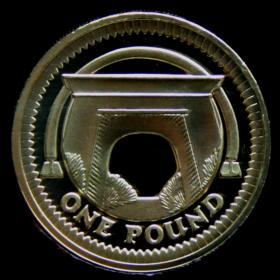
|
| Issued in 2002 (English design) |
Issued in 2004 (Scottish design) |
Issued in 2005 (Welsh design) |
Issued in 2006 (Irish design) |
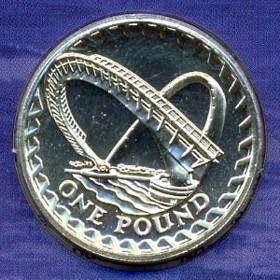
|
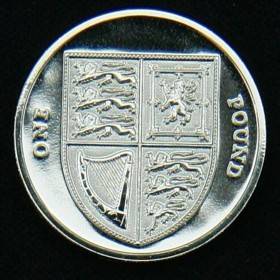
|
||
| Issued in 2007 (English design) |
Issued from 2008 | ||
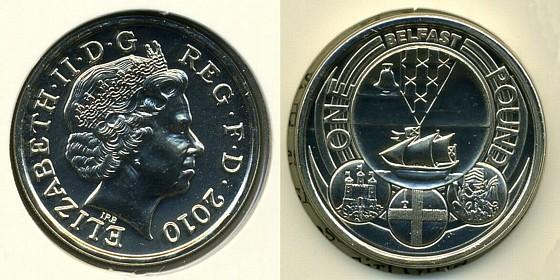
|
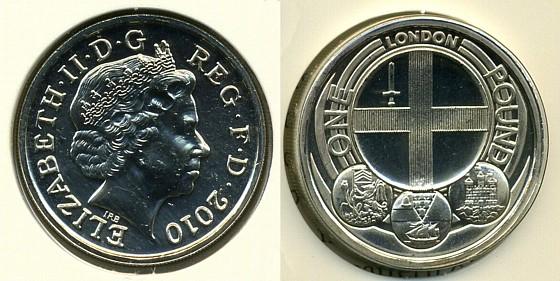
|
||
| In circulation | In circulation | ||
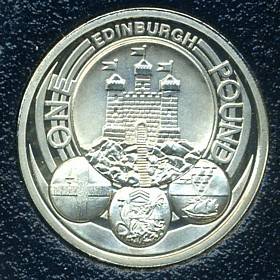
|
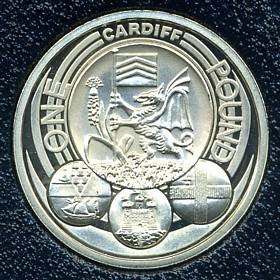
|
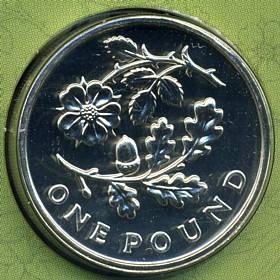
|
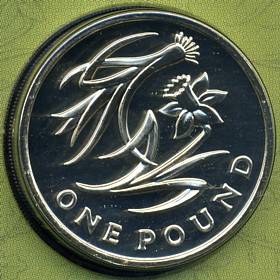
|
| In circulation | In circulation | To be issued in 2013 | To be issued in 2013 |
| Decimal Two Pound | |||
| The British two pound (£2) coin was first issued as a commemorative coin in 1986 to celebrate the Commonwealth Games in Scotland. Six further commemorative issues followed between 1989 and 1996. These coins did not circulate in large numbers. After a review of the United Kingdom coinage, it was decided that a general-circulation £2 coin was needed, and a new bi-metallic design was issued on 15 June 1998 (dated 1997). | |||
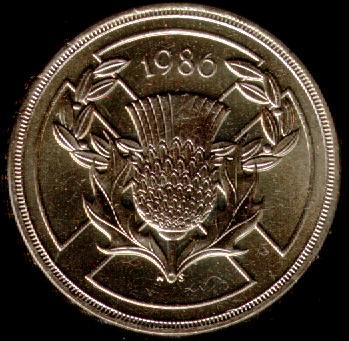
|
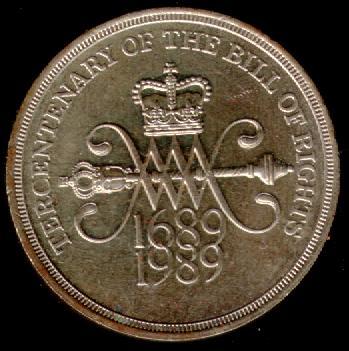
|
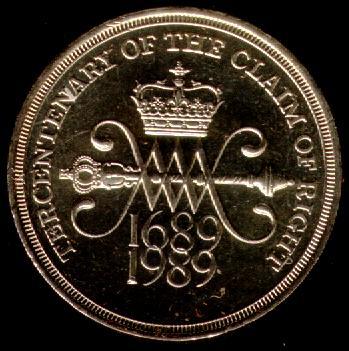
|
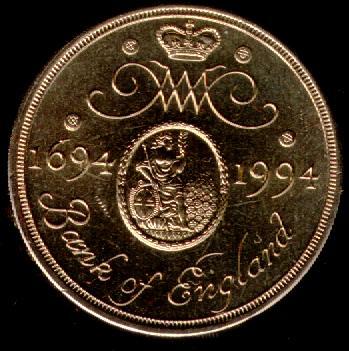
|
| Celebrating the 1986 Commonwealth Games in Edinburgh | English version | Scottish version | Celebrating the Tercentenary of Bank of England |
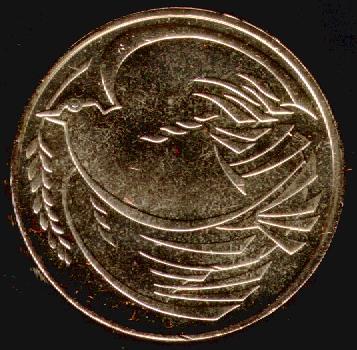
|
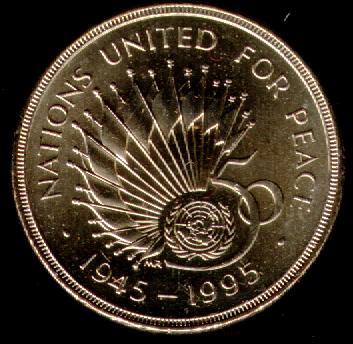
|
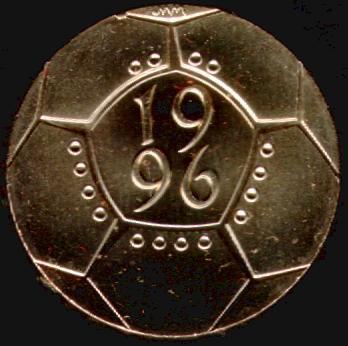
|
|
| 50th Anniversary of the end of the Second World War | 50th Anniversary of the United Nations | Tenth European Championship | |
| Bi-metallic coin (1997 to present) This was the first bi-metallic coin to be produced for circulation in Britain since the tin farthing with a copper plug produced in 1692, and is the highest denomination coin in common circulation in the UK. The coin consists of an outer yellow metal nickel-brass ring made from 76% copper, 20% zinc, and 4% nickel, and an inner steel-coloured cupro-nickel disc made from 75% copper, 25% nickel. The coin weighs 12 grams and is 28.4 millimetres in diameter. | |||

|
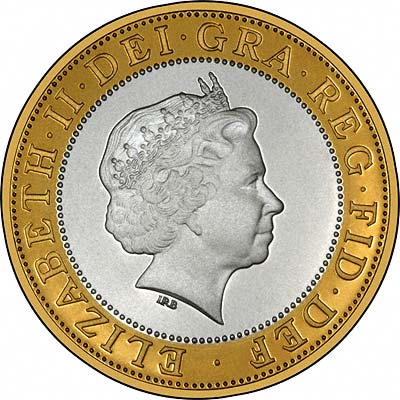
|
||
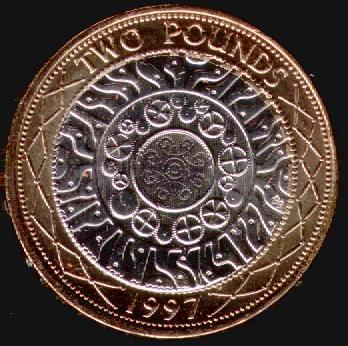
|
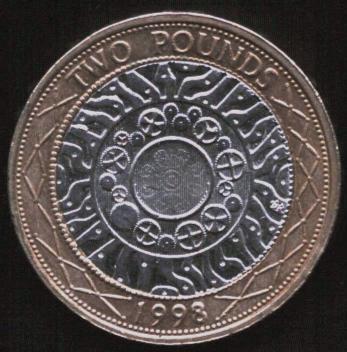
|
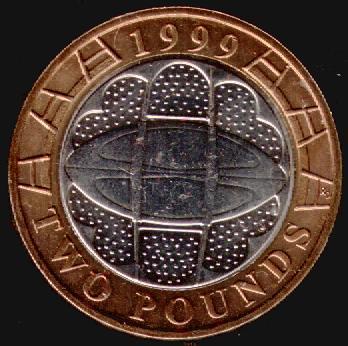
|
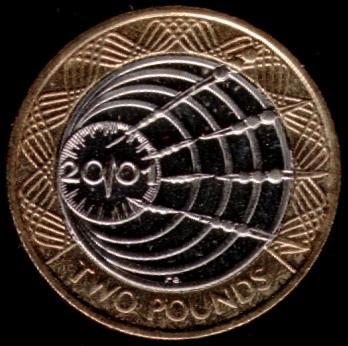
|
| Issued in 1997 | Issued in June 1998 | Issued in 1999 | Issued in 2001 |

|
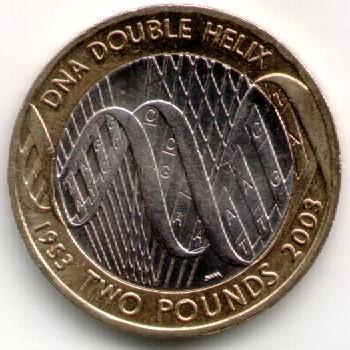
|
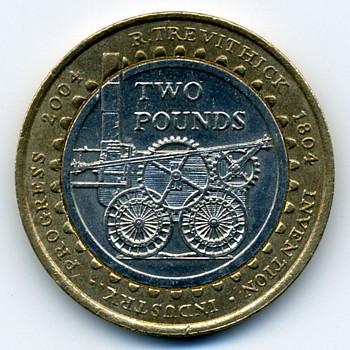
|
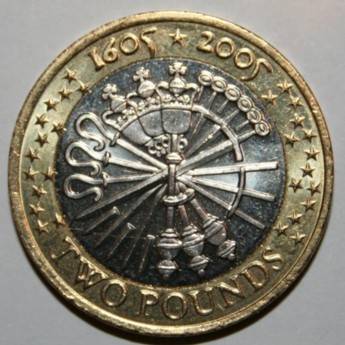
|
| Issued in 2002 | Issued in 2003 | Issued in 2004 | Issued in 2005 |
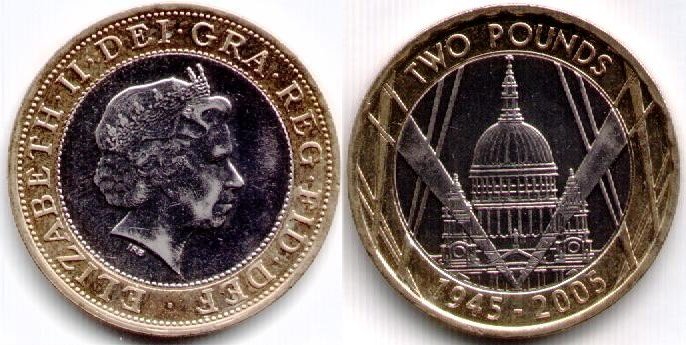
|
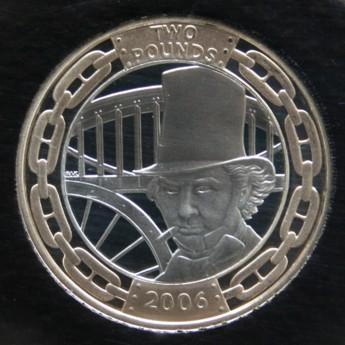
|
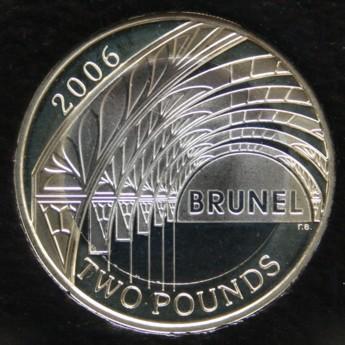
|
|
| Issued in 2005 | Issued in 2006 | Issued in 2006 | |
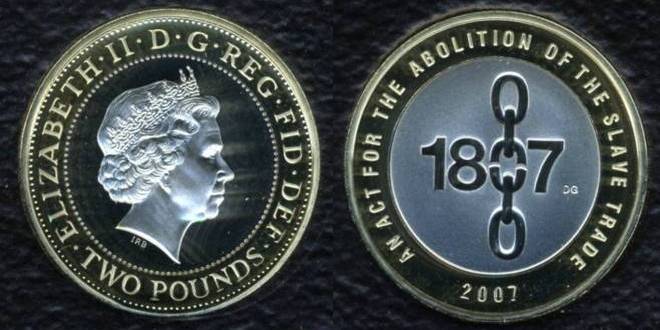
|
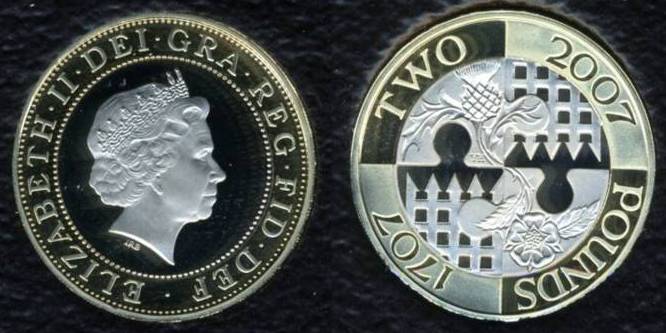
|
||
| Issued in 2007 | Issued in 2007 | ||
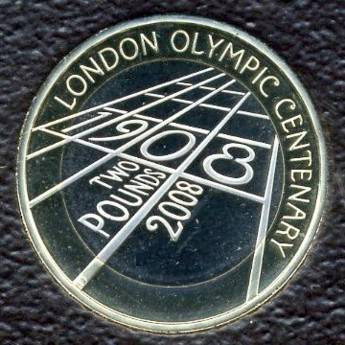
|
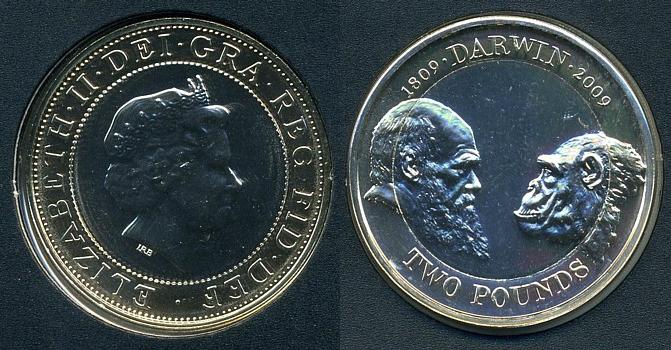
|
||
| Issued in 2008 | Issued in 2009 | ||
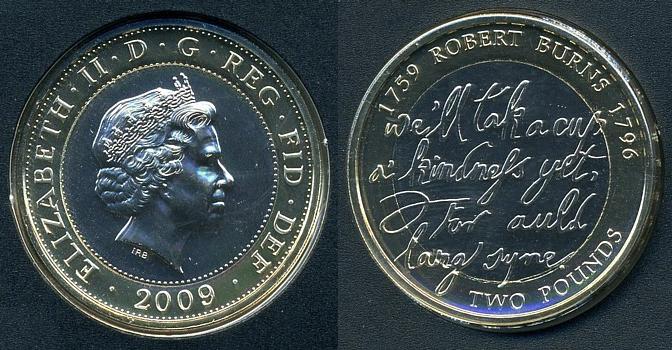
|
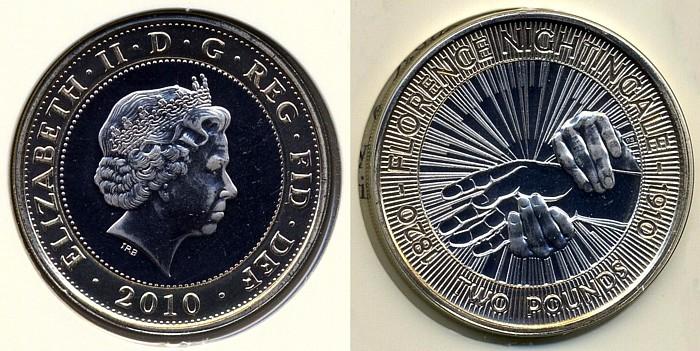
|
||
| Issued in 2009 | Issued in 2010 | ||
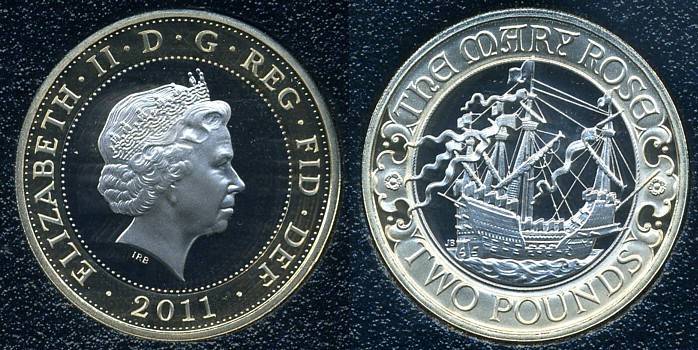
|

|
||
| Issued in 2011 | Issued in 2011 | ||
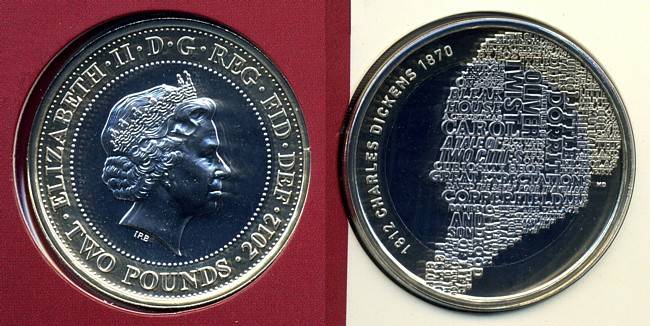
|
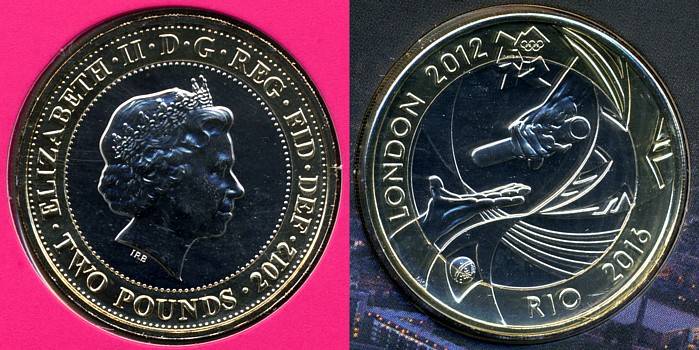
|
||
| Issued in 2012 | Issued in 2012 | ||
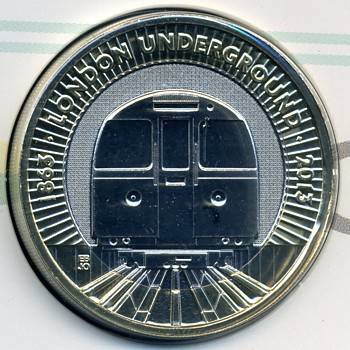
|
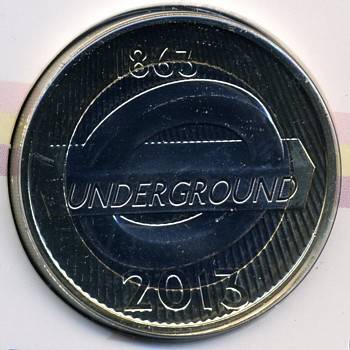
|
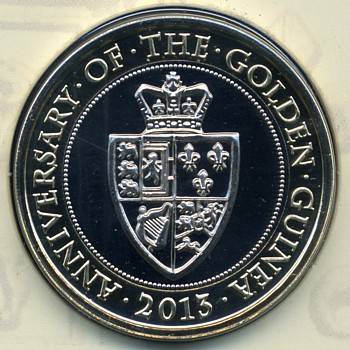
|
|
| Issued in 2013 | Issued in 2013 | Issued in 2013 | |











